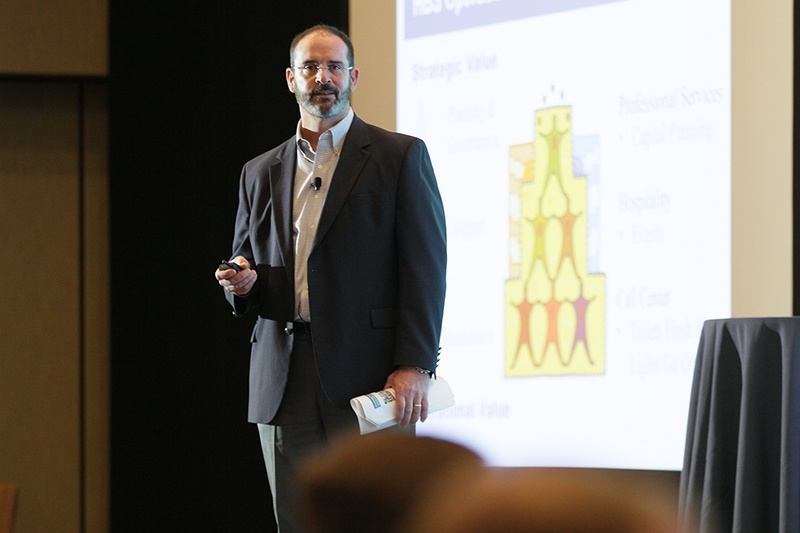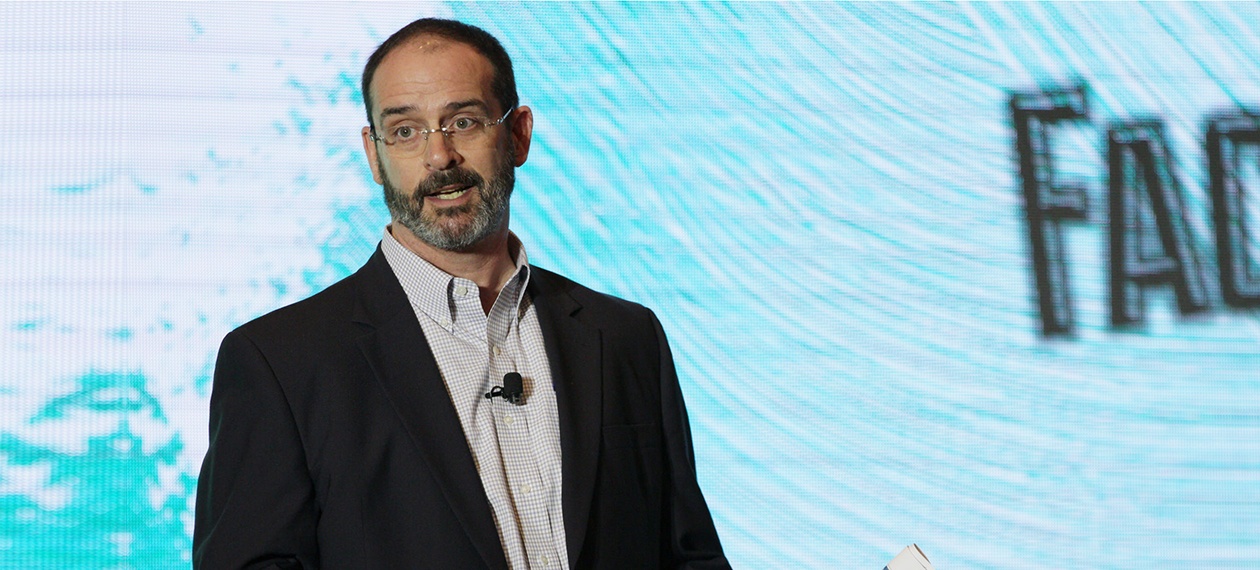In today’s connected world of instant gratification, the customer service bar is constantly rising. Higher Ed facilities organizations are far from immune from these elevated expectations and the pressure to deliver quick, seamless service.
In fact, Millennials and Gen Z set the bar even higher when it comes to frictionless customer service.
At the Higher Ed Facilities Forum, Andy O’Brien, Chief of Operations at Harvard Business School, shared his own department’s quest to define what customer service excellence truly means on an academic campus...
The Secret to Breakthrough Service?
O’Brien first provided some background on Harvard Business School, one of the 12 professional schools at Harvard University. With 36 buildings located on 40 acres and a daily population of around 5,000 people, HBS’ customer base includes students, faculty, alumni, contractors, and staff. The Operations department outsources about 85% of its services.
“HBS is a school that teaches operational excellence and customer service, so the pressure is really on to model what we teach,” O’Brien shared.
O’Brien’s secret to achieving breakthrough service? “It’s essential that you value your staff as much as you value your customers,” he said. Other key customer service credentials include...
- Create conditions that allow your customers and employees to thrive.
- Leverage data, analytics, and technology to enhance your service offering.
- Assess and address gaps in service execution.
- Align the operating model with customer needs and behaviors.
- Communicate your strategic mission while engaging and motivating staff.
At HBS, the school’s commitment to better customer service began with the creation of a mission statement to clarify its goals both internally and externally. Eighty HBS employees gathered to discuss the existential question: What do we do? To gain more perspective, they approached it from an alternative angle as well: “If we weren’t here, what would be missing?” O’Brien shared that a successful mission statement should be lasting, simple to remember, and effective. After some deliberation, the following mission statement was born:
“The mission of HBS Operations is to manage the proper environment for the school by striving to set the standard for operational excellence through creativity and teamwork.”
Once the mission statement was established, O’Brien’s team tackled the next challenge: with such a wide array of service offerings, there were disconnects between staff on what excellent customer service looks like in the different sectors.
“When you have 450 staff members providing so many different customer engagements across all these touchpoints, it’s a high-churn operation. We had to get really thoughtful and deliberate about customer service,” O’Brien said.
To do so, the team created a value pyramid. The bottom section focused on the operational value, meaning maintenance services and basic duties like keeping the lights on. The middle section focused on support and engagement services, such as events held on the campus. At the top was the strategic value which the Operations department brings to the table, characterized by planning and governance responsibilities.
Once these areas were defined, the HBS team came up with characteristics and set expectations for each of the different offerings. When it comes to maintenance responsibilities, for instance, customers expect speed.
“For instance, say an employee is dealing with a maintenance call, such as a student locked out of their room. We defined this type of call as a transactional, one-on-one interaction that occurs with a high frequency, has a short duration, and requires little customization. The nature of the call is basically: ‘Call me and I will take care of your request right away.’”

As we move up the pyramid, however, the expectations shift. Once we reach the top, the expectation evolves to: “Provide me with what I need without me even knowing what it is or how to explain it.” This is referring to professional services like emergency drills and capital planning—where there are many stakeholders involved, a long duration (years), and a high level of customization.
O’Brien’s team also took into consideration a variety of different perspectives when considering how to improve the delivery of HBS’ services. He encourages facilities leaders to consider the following factors:
- Customer Perspective (experience, expectations)
- Staff (roles, responsibilities, training, workload)
- Process (are you using a legacy approach?)
- Tech (do you have what you need, and use it effectively?)
- Work Environment (setting, schedules, co-location)
- Performance Measurement (do you know how you’re doing?)
“In the end, the question is, do we have the right people in the right place doing the right things in the right environment? If you can look across the span of your services and answer yes, then you’re doing a great job,” O’Brien explained.
Essential Elements of Customer Interactions
In any customer service interaction, there are four elements: the customer, the employee, engagement, and context. According to O’Brien, it’s how you manage each of these that will determine a good or bad outcome.
He used a lockout call as an example. “The customer’s expectation is an immediate response with civility and a positive attitude… even if it’s the 10th time the student has done that.”
On the employee’s end, there’s a need to understand his or her role and the tools to get the job done, like knowing the campus and being given the exact location by the dispatch. Additionally, s/he needs acknowledgment and feedback on performance.
“I remind my team that it’s not just a lockout call; it’s a way to meet your customers and get a little relationship going,” O’Brien said.
O’Brien suggests that higher ed facilities leaders consider the following questions when assessing their customer service delivery:
Have you authorized your team members to act on the customer’s behalf?
- is the process as streamlined as possible?
- is the job description clear?
Do they have the capability to act?
- do they have everything they need to fulfill these needs, like proper staffing coverage and training?
Are they motivated?
- do your employees feel valued and recognized?
- are you recruiting and hiring for the right person?
Final Takeaways
O’Brien wrapped up by urging facilities leaders to ask front-line staff for service improvement ideas. “As a leader, you’re probably missing some details. The staff really understand what can be done to improve,” he said.
The bottom line is, if you’re not constantly on the lookout for opportunities to enhance your customer service, your organization will stagnate. O’Brien reminded facilities leaders that customer service is a journey of continuous improvement, and provided a few closing remarks:
- Encourage a culture of open involvement from all levels.
- As a leader, you must walk the talk. Your staff will notice and follow your lead.
- Always challenge the status quo. If it's good enough, it will stand the test.
- Use tech to facilitate person-to-person engagement, not eliminate it.
- Celebrate successes and be open to failures as a learning opportunity.
- Enjoy the journey!
Join us at HEFF 2019 to learn innovative approaches to lead higher ed facilities.

Posted by
Join us at HEFF!
An interactive retreat for facilities leaders at the nation's top colleges and universities.
Nov 8-10, 2026 | San Antonio, TX
Learn More









Comments